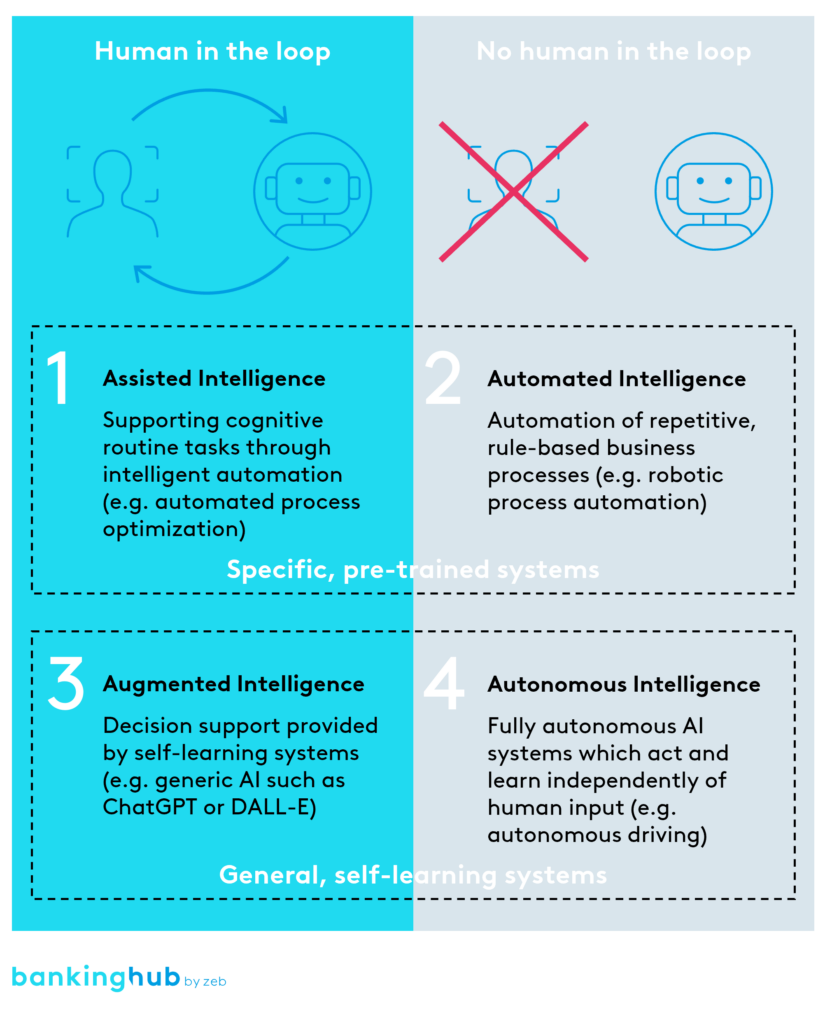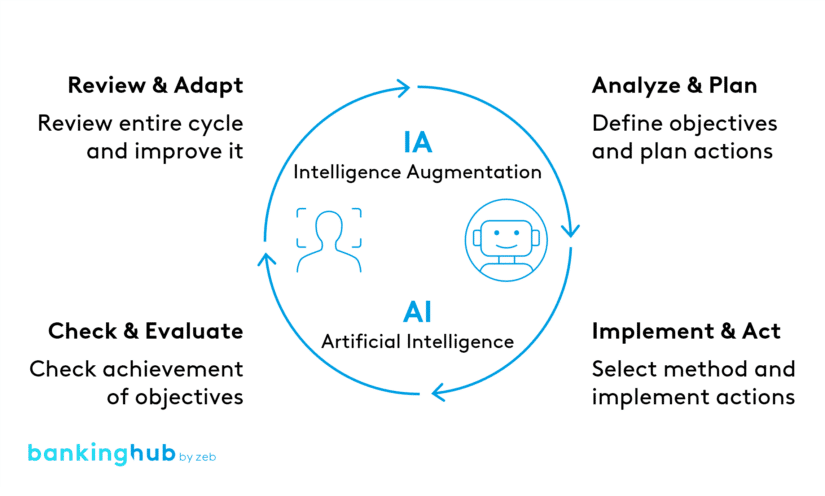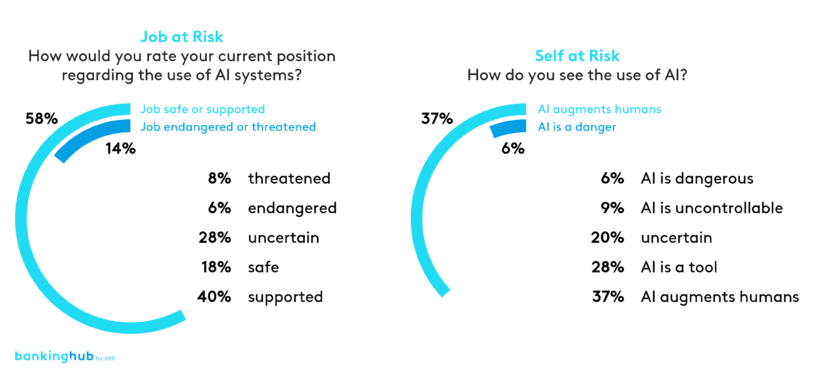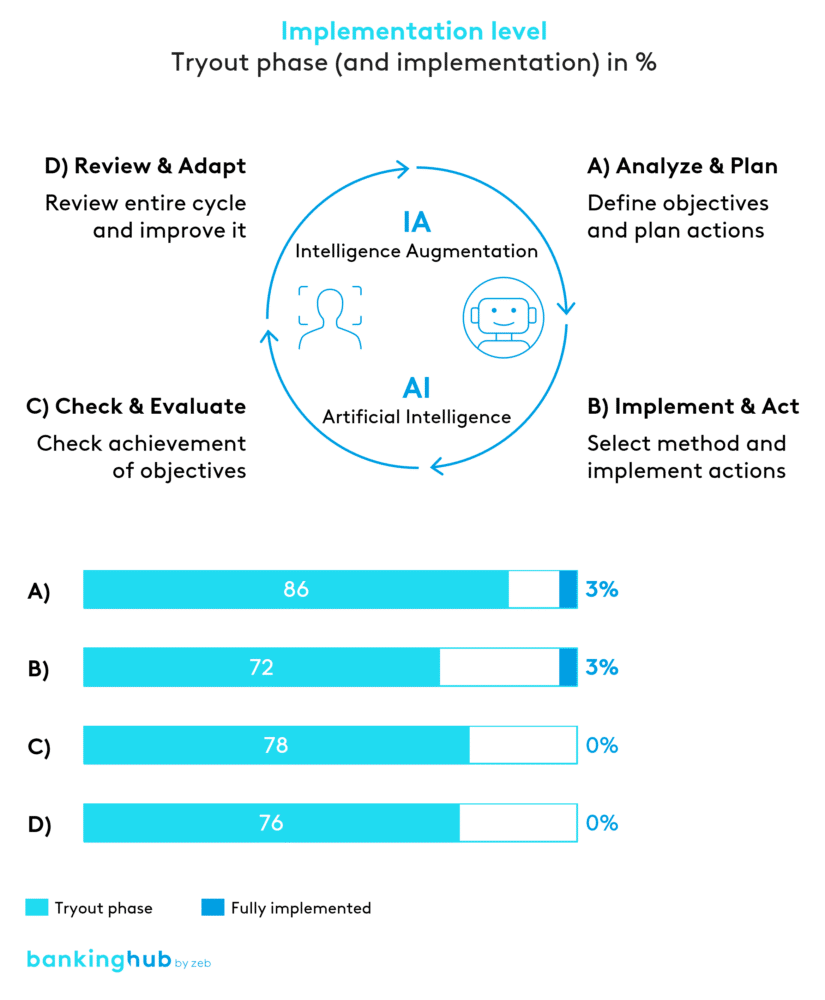The research consortium and the survey about AI
We need a more profound understanding of the impact of artificial Intelligence on professional tasks. Some studies assume that AI will replace a quarter of all work tasks and millions of jobs. These studies also predict large productivity gains of billions of US dollars per year.
However, new positions such as data scientists or prompt engineers indicate that humans will remain in the loop and will work with AI in a closer and more interactive way. In particular, we want to better understand how different types of AI influence different professional tasks. For example, AI can be used to automate repetitive and rule-based jobs and processes. It can also be used to extend the scope of an organization’s capabilities beyond human capabilities. Simply put, artificial intelligence is the simulation of human intelligence processed by machines, especially computer systems.
In our study, we take a broader view. We believe that “AI at work” can be a win-win situation for both organizations and employees: if machines and humans can achieve a more efficient decision-making process less prone to errors, employees should experience less psychological overload, feel more confident in their decisions, and make better decisions thanks to AI support.
We test scenarios in which different types of AI can be applied to different management tasks. We also ask the participants questions about their companies, their professional roles and about themselves.
The study is supported and conducted by a number of international partners:
- MIT Center for Collective Intelligence (USA)
- Laboratoire en Intelligence des données de Polytechnique Montréal (Canada)
- Bayes Business School (United Kingdom)
- Faculty of Management, Wrocław University of Science and Technology (Poland)
- European Research Center for Information Systems (ERCIS), University of Münster (Germany)
- The Moroccan International Center for Artificial Intelligence, Mohammed VI Polytechnic University (Morocco)
- Council for Scientific and Industrial Research (CSIR), Pretoria (South Africa)
- College of Engineering, Abu Dhabi University (United Arab Emirates)
- Goa Business School, Goa University (India)
- Faculty of Management, Hanoi University (Vietnam)
Adnan Kassar School of Business Lebanese American University Beirut (Lebanon) / Libanon
BankingHub-Newsletter
Analyses, articles and interviews about trends & innovation in banking delivered right to your inbox every 2-3 weeks
"(Required)" indicates required fields
Application scenarios examined in the study
There are several concepts of using solutions based on AI. Some use specially trained AI systems to automate tasks and certain processes. Others rely on a “human in the loop”, i.e. a close interaction between humans and self-learning AI.
The use of AI systems can be divided into four groups
- Automated intelligence – automation of repetitive, rule-based processes
- Assisted intelligence – support of routine tasks
- Augmented intelligence – AI supports and enhances human decision-making
- Autonomous intelligence – learning independently of human input and deciding in ways that also affect humans
AI work scenarios
We ask questions about several scenarios in which AI in general, AI-based analytics and AI-assisted decision-making are applied at the workplace. Participants are asked to rate the questions based on their previous experience with AI. For each statement in the survey, they rate the extent to which the statement applies to their organizations – or select the “I don’t know” option.
- The first set of questions is related to the “Analyze and Plan” task area: Using AI to set goals and plan actions, answering the question: What should it look like?
- The second set of questions is related to the “Implement and Act” task area: Using AI to select methods and implement actions, answering the question: What and how do we do it?
- The third set of questions is related to the “Check and Evaluate” task area: Using AI to verify the achievement of objectives, answering the question: What has been achieved?
- The fourth and final set of questions is related to the “Review and Adapt” task area: Using AI to review and improve the entire cycle, answering the question: How can we improve?
(Initial) results of the AI study
We launched the first survey at the end of 2023. So far, more than 200 participants from 9 European and 8 non-European countries have responded. Here are some highlights from the initial results.
Is AI dangerous – or beneficial?
Most respondents believe their jobs are safe and their work is supported by AI: 40% feel supported by AI and 18% feel safe in using it. However, 28% are uncertain about the impact of AI on their job prospects, and 14% feel their jobs might be threatened or endangered. Only a small minority of 6% think that AI is dangerous in general, but 20% feel uncertain. 28% agree that AI is just a tool, and 37% believe that AI is increasing intelligence.
To what extent is AI implemented?
We asked about the level of implementation of different types of AI in the four phases of the PDCA management cycle (Plan-Do-Check-Act). A large majority of the first 150 respondents are already trying out some form of AI: between 86% (Analyze & Plan) and 72% (Implement & Act). But only a small minority have partially or fully implemented AI tools yet. The level of usage is only slightly higher among younger colleagues (<30 years). Older colleagues (>50 years), however, are more skeptical about the possibility of replacing their jobs and are wary of the way AI can be dangerous in general.
Does the organization help to use AI safely and competently?
We also asked if the use of AI was supported by AI-specific regulations and training. 26% found no policies, guidelines, or regulations and only 16% participated in AI-specific training, although almost half (45%) had related external training.
These are just preliminary results and there is more to come as more people respond to the “AI at Work” survey.
Have you already participated in the study on the use of AI in the workplace?
Every participant is making an important contribution to our research. We will also inform you about the final study results here on the BankingHub.










